If you’re new to New York City — or just a fledgling property owner, landlord, or building manager — you may be taken back by the vast amount of codes, laws, rules, and regulations concerning multi-family dwellings, rental properties, condominiums, and coops.
Out of all the areas of compliance one of the most important — and perhaps the most essential — pertains to the signs and notices you use in your property, as well as their various locations. Here’s a quick overview of what HPD building signs are and how the city regulates their use.
First off, the New York City Department of Housing Preservation and Development, or HPD, is the largest agency of its kind in the United States. Their job is to maintain and develop a sufficient number of affordable housing units for New Yorkers and also to enforce the city’s Housing Maintenance Code in order to ensure the quality and safety of that housing.
If your property is a multiple dwelling with three or more units, or a private dwelling of one to two units where neither the owner nor the owner’s immediate family members live, you need to register with HPD every year by September 1, or whenever the property changes hands (You can register here).Residences that have registered as HPD buildings are also expected to have specific signage that is mandatory for all multi-dwelling properties in New York City. These signs, known as HPD signs, must be displayed in appropriate locations in compliance with Housing Maintenance Code.
Different Types of Required HPD Signs and Notices for Real Estate
Once you’ve registered your building as an HPD property you’ll need to buy these required HPD building signs and forms in order to remain up to code. Here’s a breakdown of the different types of required signs and notices:
Safe Construction Bill of Rights
Once you file a permit for construction, you’ll need to either distribute or post a notice announcing your filing and the tenant protection plan for when the work takes place. The notice must be posted in English and made available in English, Spanish, Arabic, Haitian Creole, Chinese, Korean, and Russian as needed.
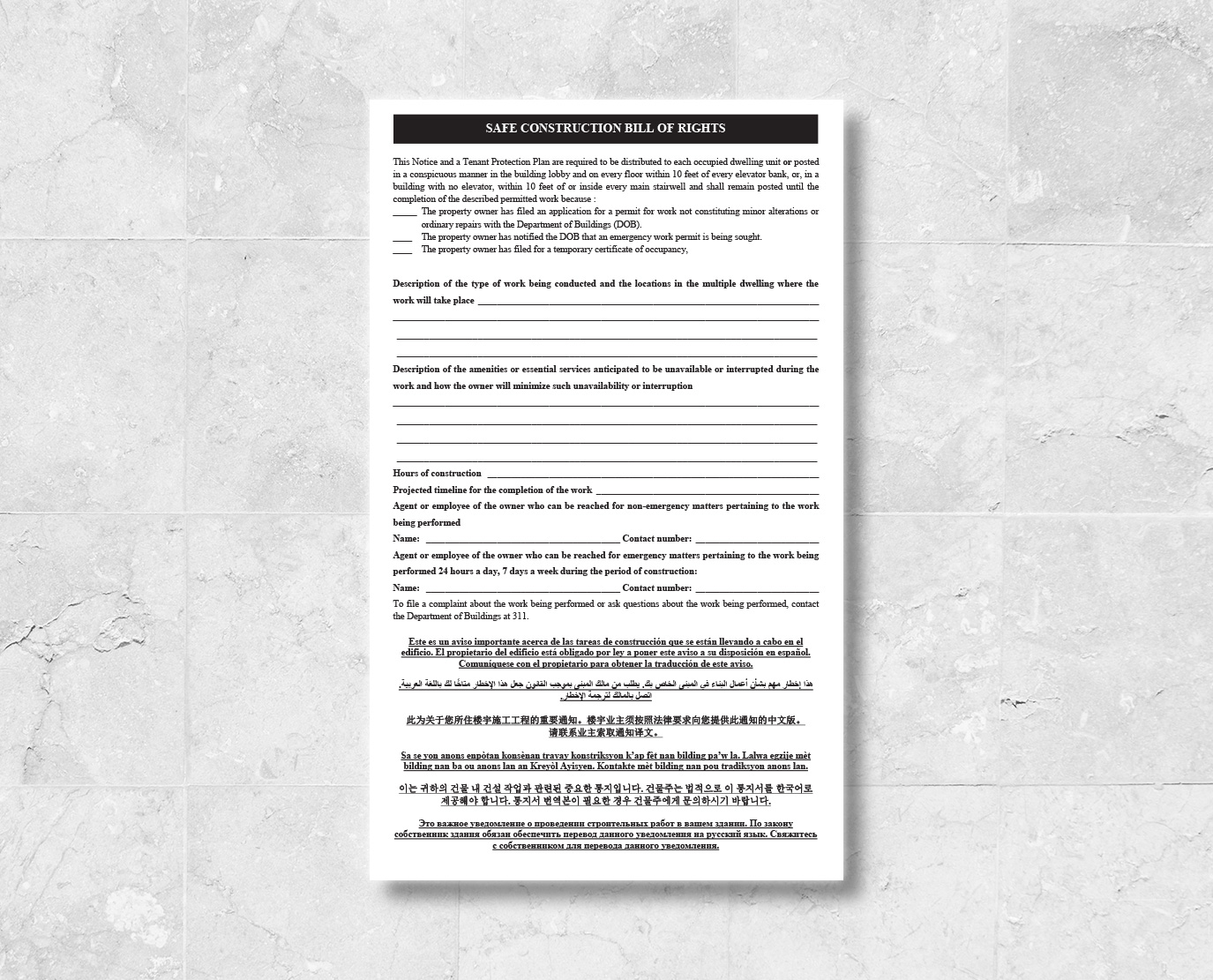
Gas Leak Notice
The owner (That’s you!) must provide tenants with the procedure for a suspected gas leak.
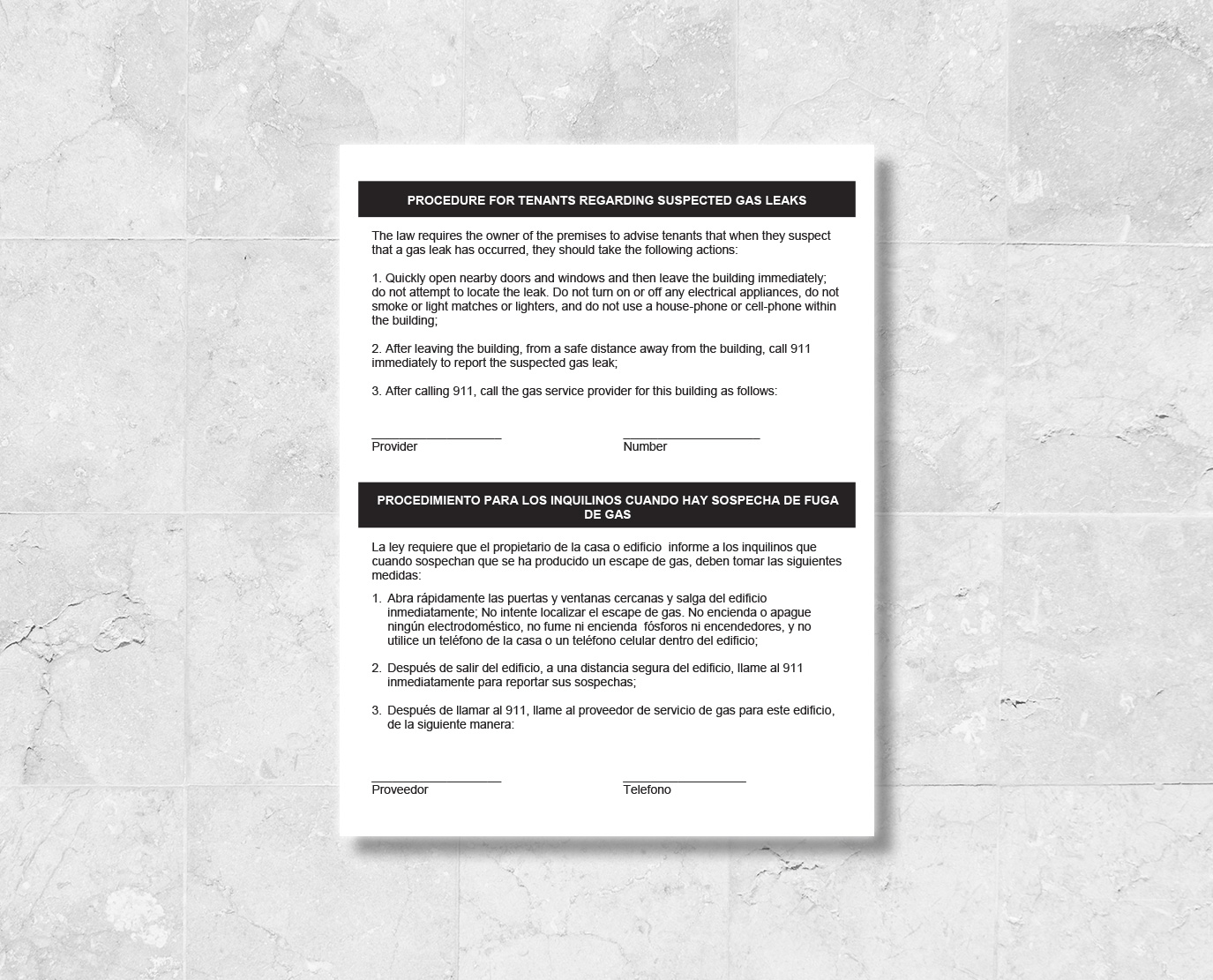
Framed Certificate of Inspection
You also need to provide a frame for a six inch by nine inch HPD Inspection Visit Card. The frame should be posted between 48 and 62 inches above the floor near the mailboxes.
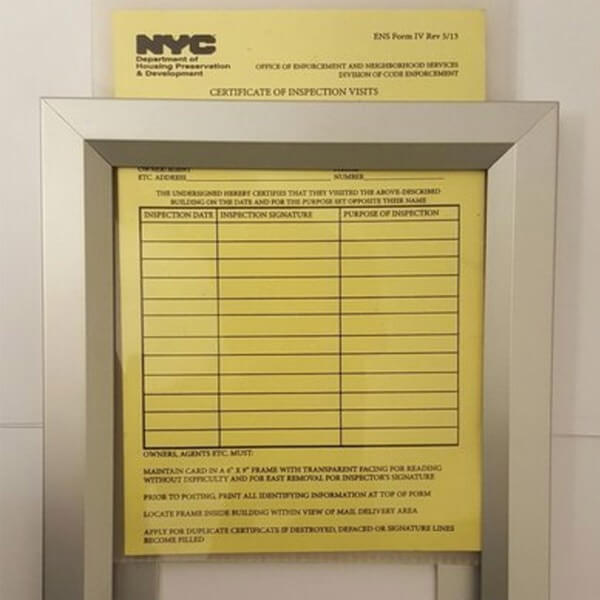
Garbage Collection Sign
You’ll need to post a sign in the building lobby indicating the days and method of garbage collection. The sign should either be laminated or framed to prevent vandalism or tampering.
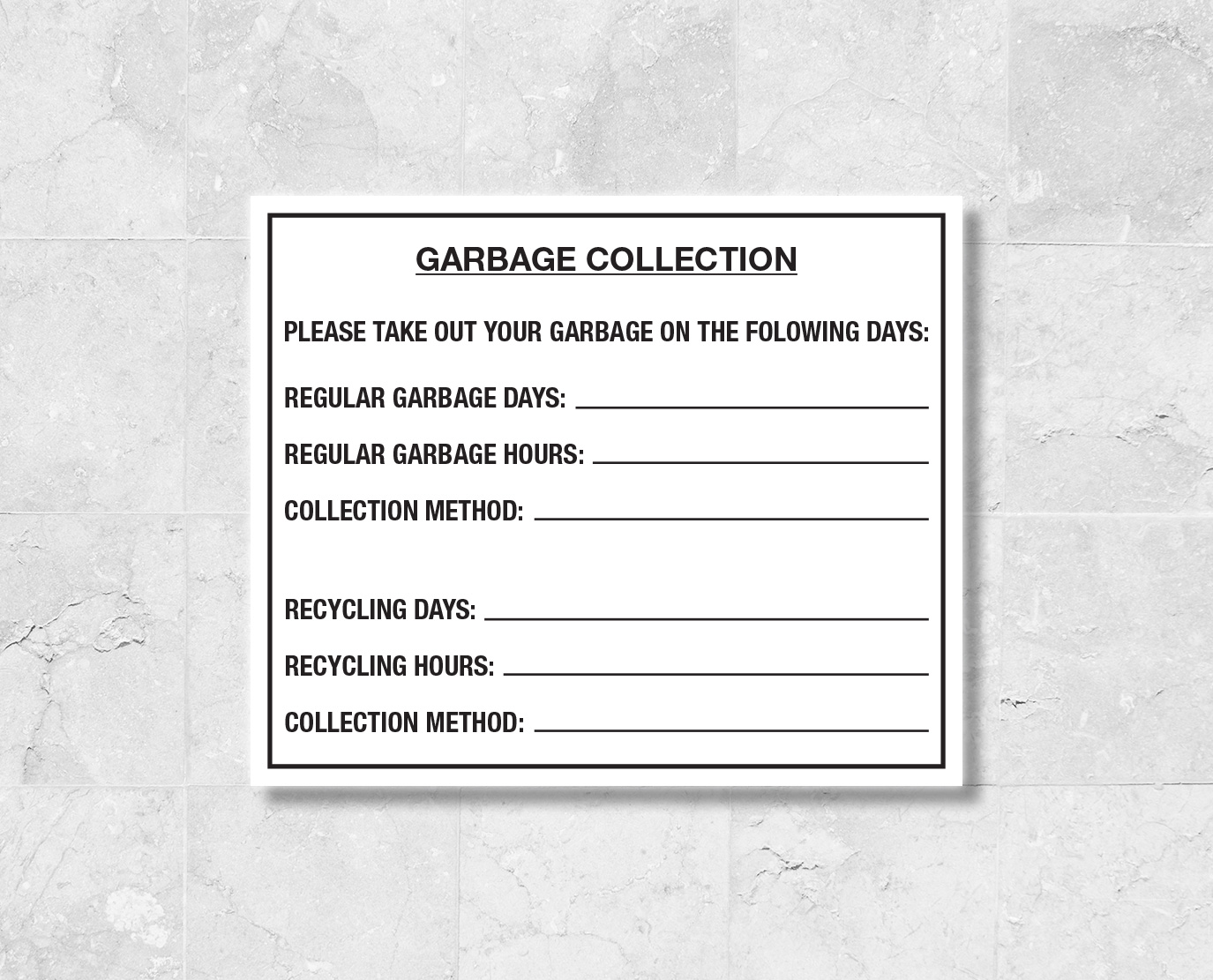
Boiler Room Keys Sign
The city also requires that buildings post the name and location of the person in possession of the boiler room key on HPD-approved notices. One notice should be posted conspicuously in the lobby and another should be posted on the entrance door of the boiler room.
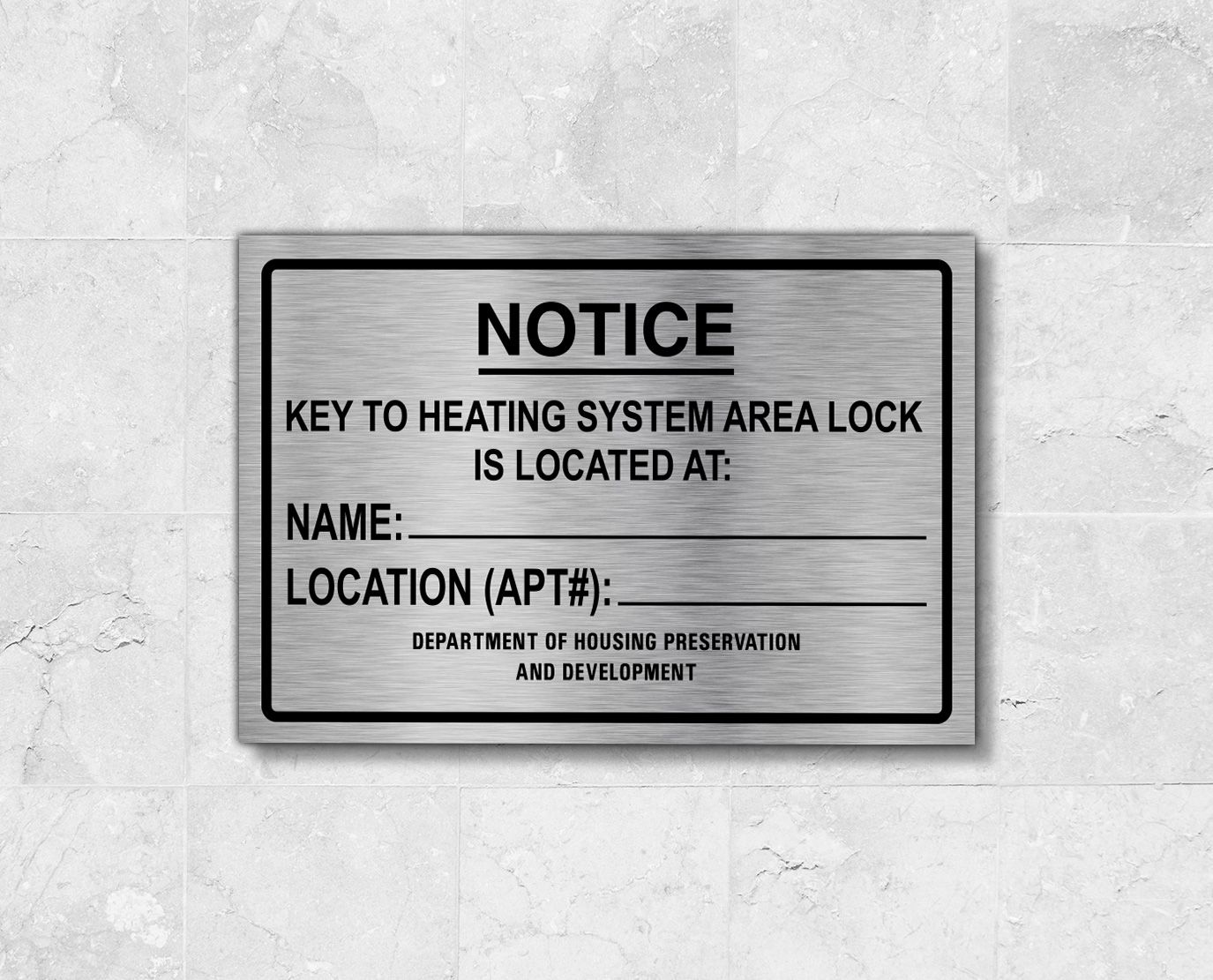
Floor Number Sign
Remember to post a sign indicating the floor number on each level.
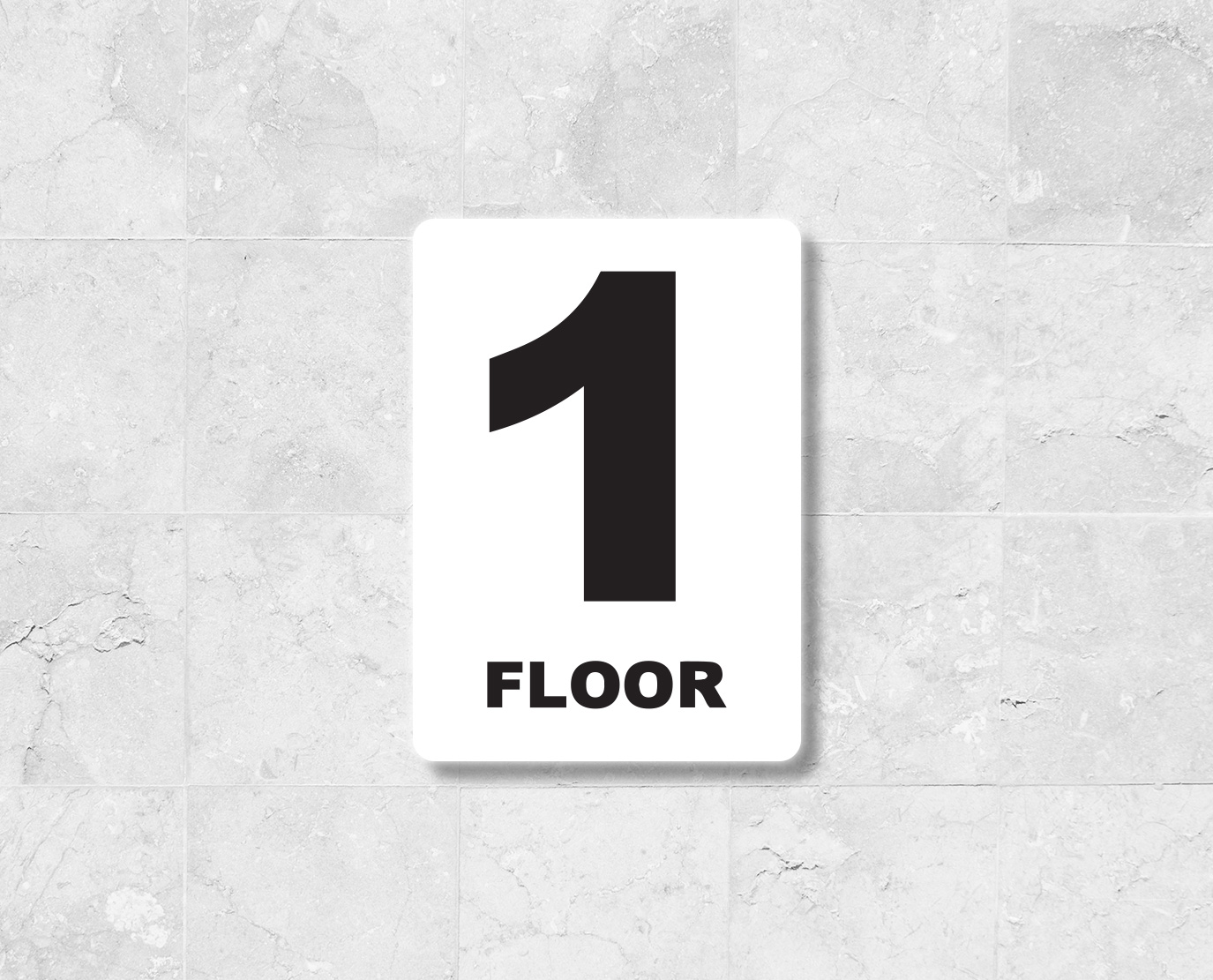
Street Number Sign
All HPD buildings must display their address out front in a way that is clearly visible from the sidewalk.
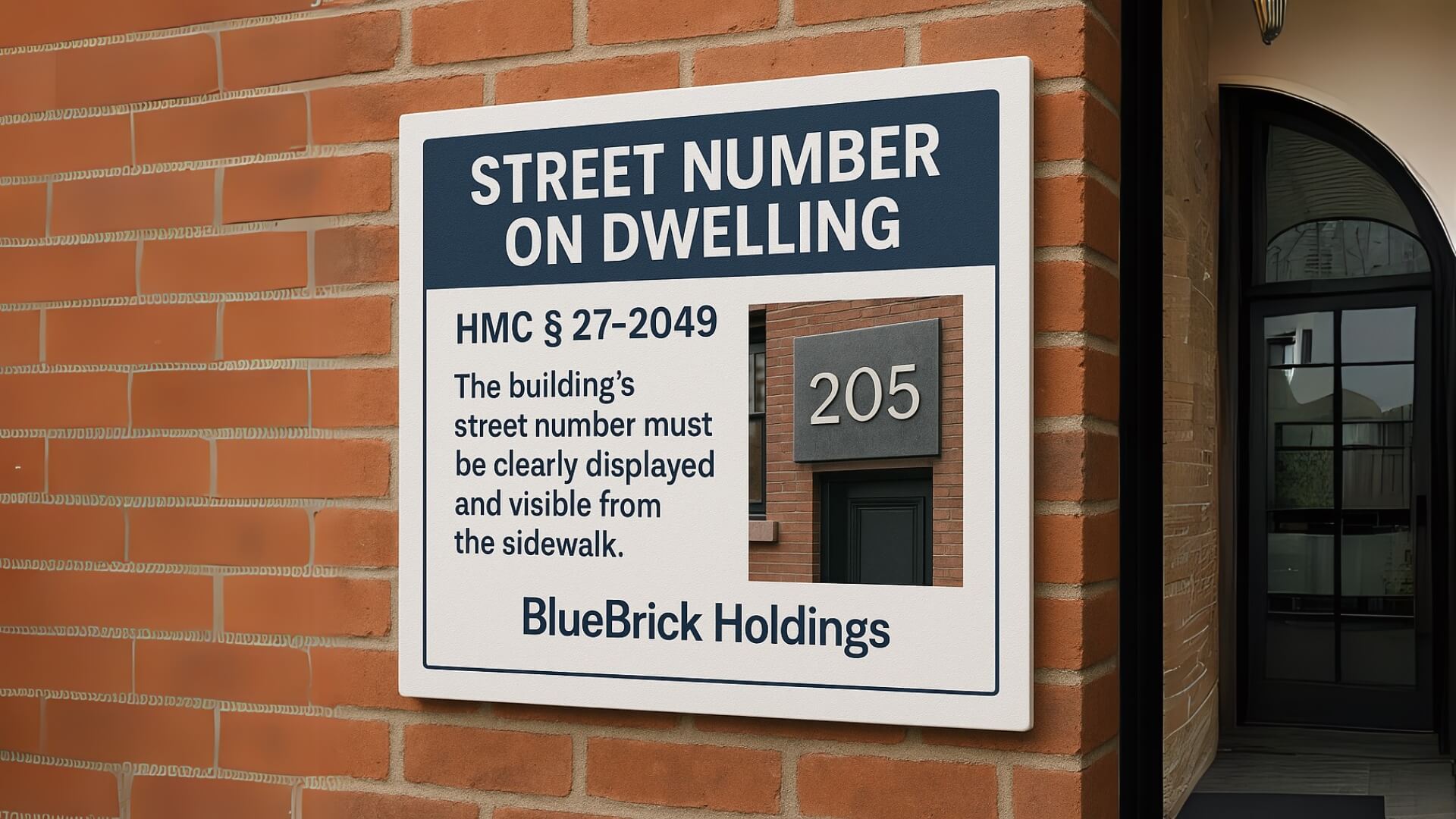
Janitor Sign
The name, address, apartment and telephone number of the superintendent must be displayed at the entrance.
Smoke Detector Notice
Post HPD-approved smoke detector notices near mailboxes. Ditto for carbon monoxide detector alarm notices. There’s a new way to combine these two notices along with the gas leak notice — don’t worry, we’ll get to that in a hot second.
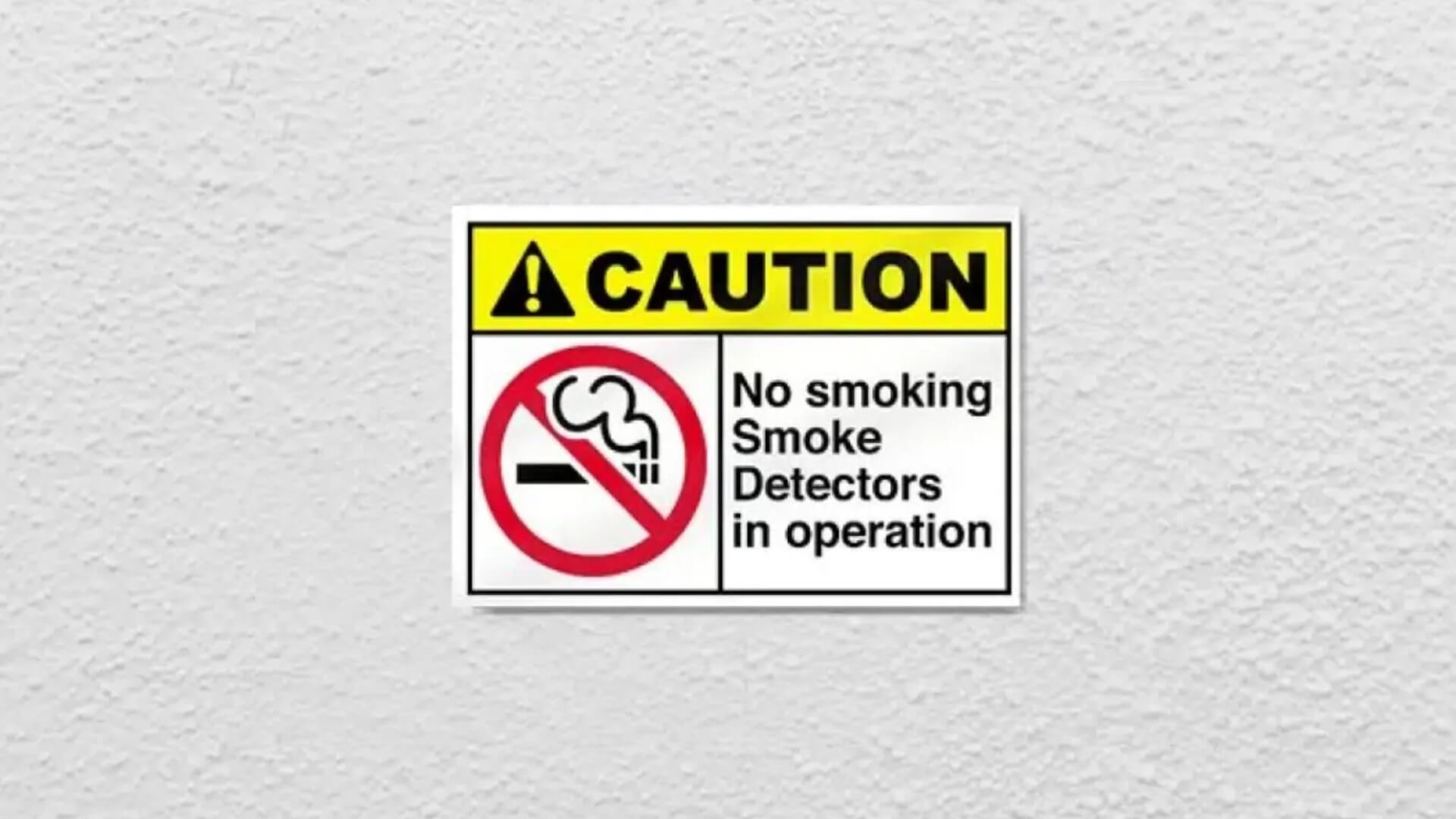
Housing Information Guide Notice
You must post the availability of a housing information guide in a conspicuous place near mailboxes.
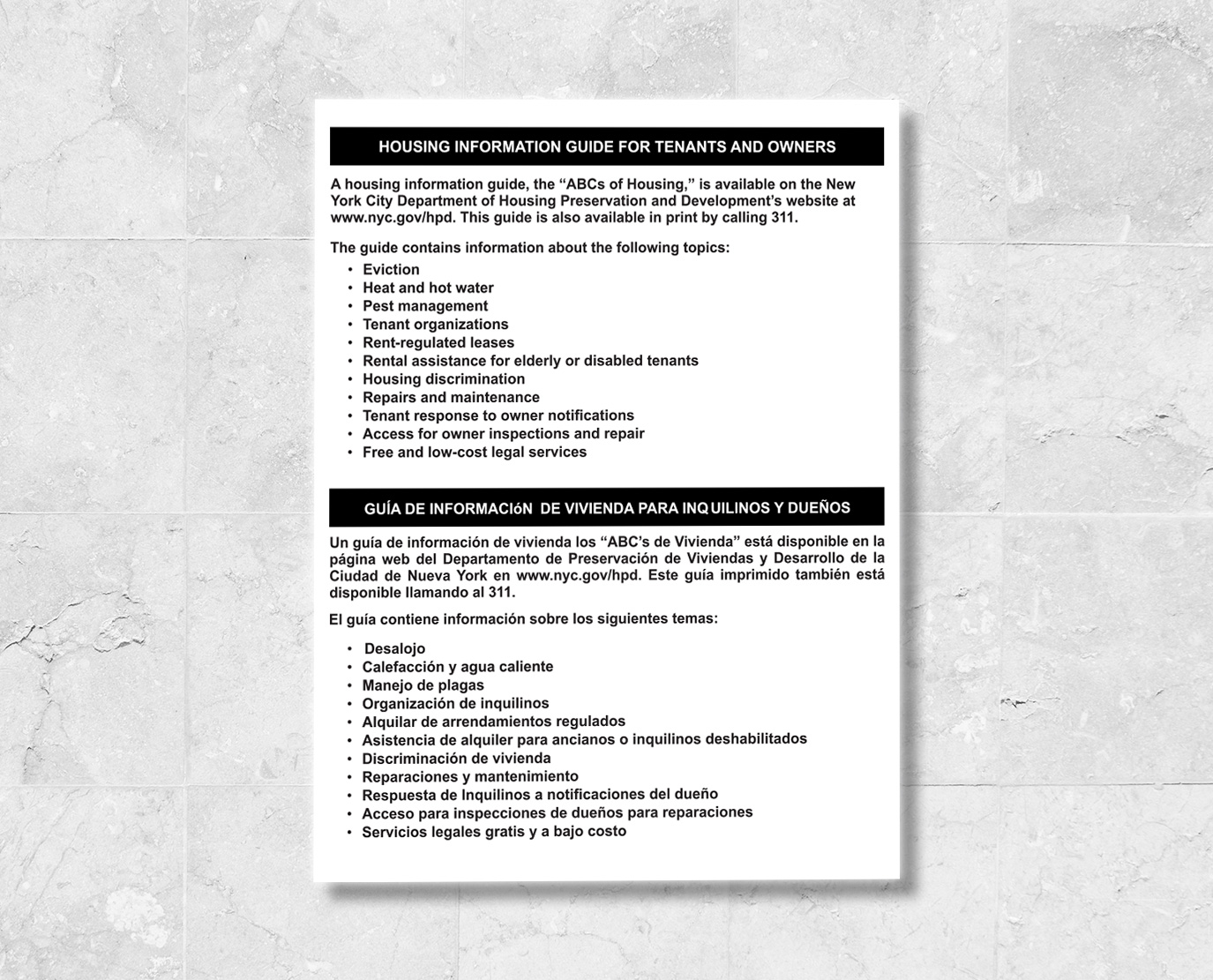
Interruption of Service Notice
A notice must be posted prior to any work that will interrupt utilities.
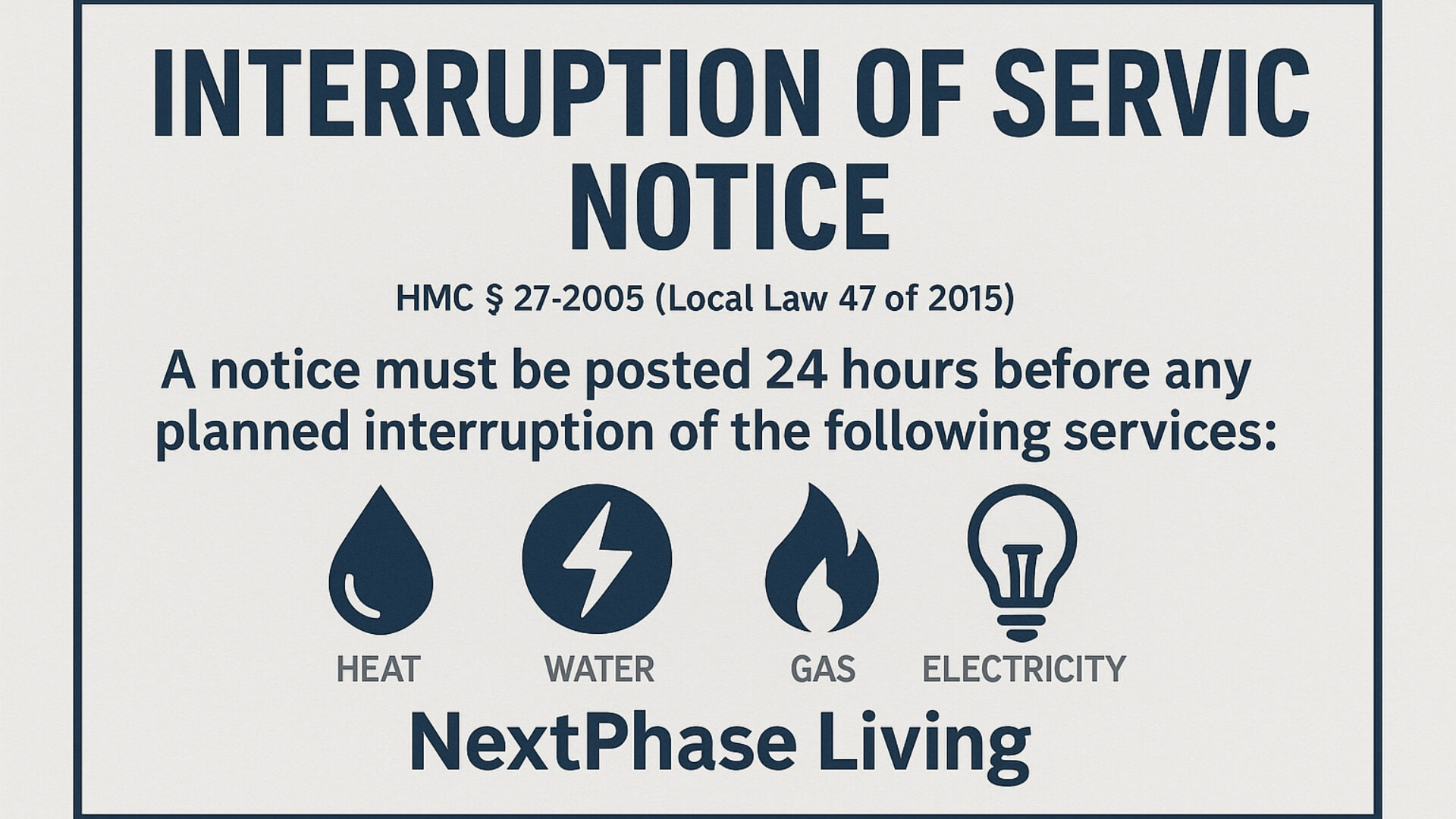
Disaster Response Signage (aka Emergency Notification Requirements)
In any building with one unit or more not occupied by the owner, the landlord must post a temporary notice prior to a weather emergency, after a natural disaster, or after learning of a power outage that will last longer than 24 hours.

Serial Number Signage
Each HPD building must display the serial number assigned by HPD, which should be posted in the building’s entrance hall. The sign should also include the building’s street address, and information about the superintendent, janitor, or housekeeper.
HPD Combined Gas, Smoke Detector, Carbon Dioxide Alarm Notice Sign
(Section12-12.1 of Chapter 12, Title 28 of the Rules of the City of New York) – As part of a new rule which took effect on October 18, 2017 property owners in New York City are now able to post a single notice that includes the required notices for gas leaks, smoke detectors, and carbon monoxide alarms. You can see a sample here.
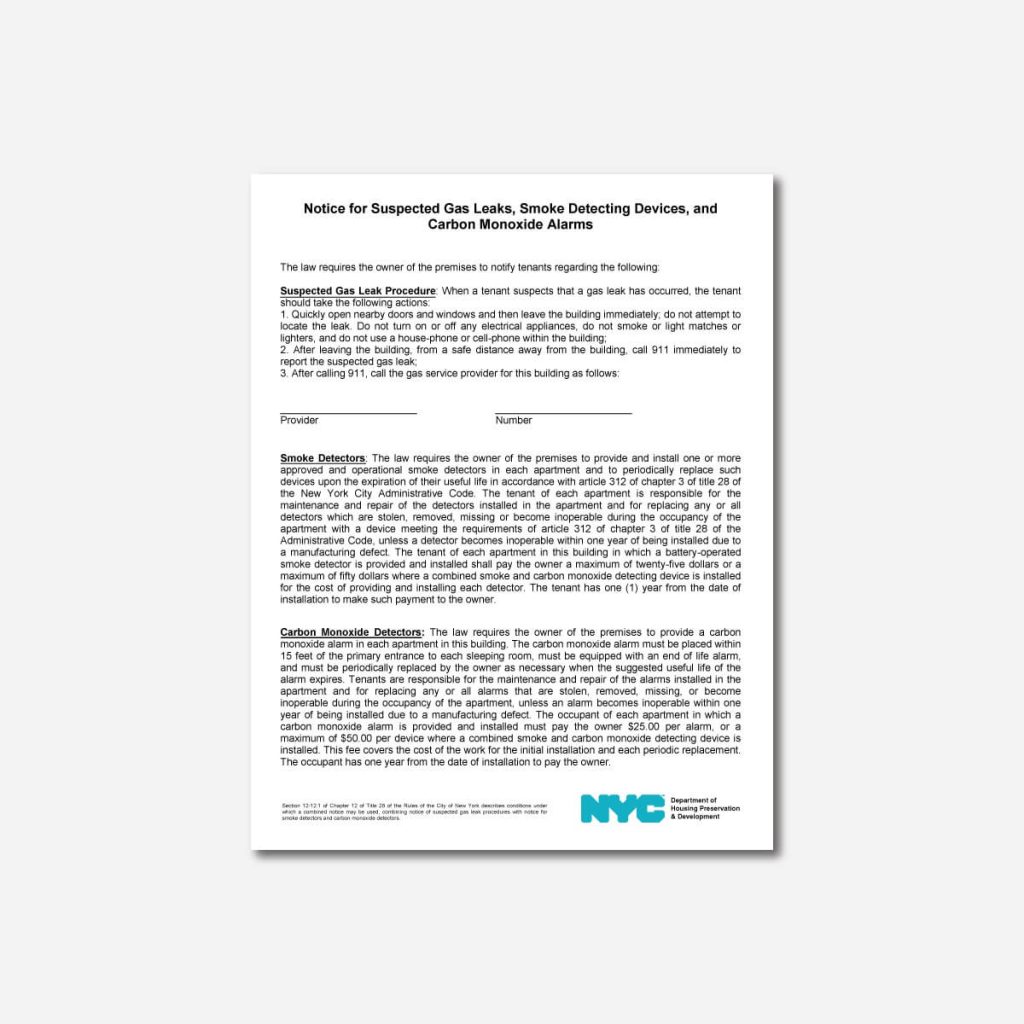
BEWARE: THERE ARE MANY NON-COMPLIANT COMBINED NOTICE SIGNS — AS WELL AS OTHER ERSATZ HPD SIGNS — IN CIRCULATION AROUND THE CITY. AS A RESULT, PROPERTY OWNERS ARE BEING FINED FOR HPD VIOLATIONS!
But don’t worry, we’ve got you covered. You can browse our entire collection of HPD-COMPLIANT SIGNAGE, all of which can be further customized for your building or multi-family house.
Now for the fun part…
HPD Signs Fines, Penalties, and Fees
HPD violations may result in civil penalties imposed by NYC Housing Court if an owner fails to comply with the violation and certify the correction. HPD inspections may also be billed to owner in the form of inspection fees. Most fines regarding signage are considered Class A.
HPD inspections may also result in emergency repair work.
Here are some examples of Civil Penalties and Violations. A more comprehensive and detailed list can be found here.
- Class A Violations are those that are considered non-hazardous. They include failure to post a notice regarding the housing information guide — which can set you back $250 for each violation. All other Class A violations are $10 to $50 each.
- Class B Violations are those that are considered hazardous. They’ll result in fines of $25 to $100 each, plus $10 per violation per day.
- Class C violations concern immediately hazardous conditions. For those that are not related to heat, hot water, illegal devices or lead-based paint, the fines are as follows: Buildings with five or fewer units can be fined $50 per violation per day. Buildings with more than five units can be fined $50 to $150 per violation, plus $125 per violation per day
- Heat and hot water violations can range from $250 to $500 per day for each violation and $500 to $1,000 per day for each subsequent violation.
- Illegal Device on a central heating system can mean a $25 fine per day or $1,000 — whichever is more.
- Lead-based paint violations rack up $250 per day per violation, up to a maximum of $10,000.
- Failure to file Property Registration with HPD— with the exception of one and two family homes occupied by the owner or the owner’s immediate family — can mean civil penalties between $250 and $500. You can register your building here — HPD Property Registration Online.
Managing property in the five boroughs of New York City can be a complex, difficult, and sometimes downright confusing experience. Let us help you. At Signs NYC, we can take care of all your signage needs and wants — from regulated city compliant notices to signs that will make your building stand out.
Contact HPD Signs NYC Today
Contact us through our online quote form and we can answer any questions about HPD Building Signs. You can also use the button at the top right corner for a quote. At Signs NYC we offer customized signage solutions at competitive prices for your property that are both NYC HPD compliant and aesthetically pleasing.